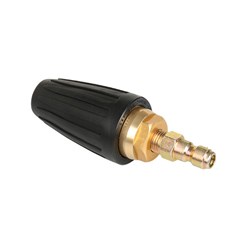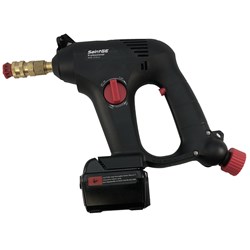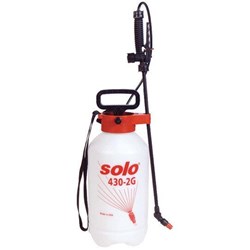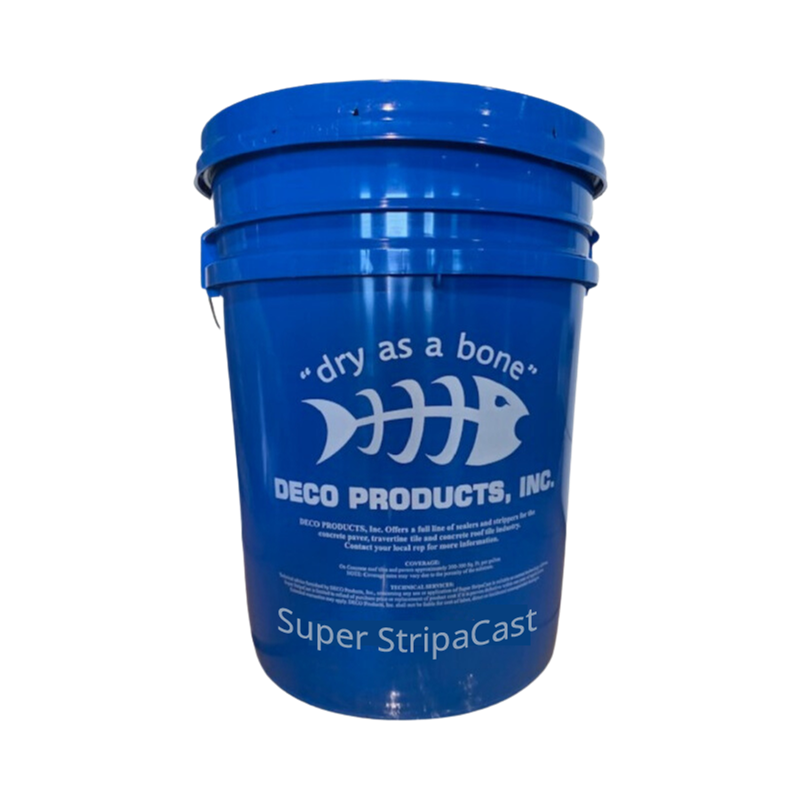Stripacast Paver Stripper Deco
Quick Overview
- An environmentally friendly stripper remove sealers and coatings from concrete, Use before Silacast BES, Deco 20 Clear Finish, or TravaCast.
- Environmentally Friendly Solution: A non-hazardous liquid stripper designed to be eco-friendly while effectively removing old sealers ensuring a fresh surface for sealing
- Quick and Easy Testing: Check if sealer removal is needed by soaking the area with water. Rapid absorption by cement indicates no prior sealing, saving you time and resources.
- Ample Coverage, No Extra Tools: With coverage for approx. 1,000 square feet and no rollers or brushes required, StripaCast simplifies the removal process.
- Will remove various acrylic coatings and is non-hazardous.
Show More
$313.60
$360.10
Stripacast Paver Stripper
Remove / Strip
Non-Hazardous - Totally Water-Based
STRIPACAST is a non-hazardous spray applied liquid stripper designed to help remove and strip old worn out film forming sealers. Will remove various acrylic coatings
Apply STRIPACAST to concrete surfaces such as concrete pavers, tiles and cementitious surfaces prior to use of our SILACASTBES, DECO 20 CLEAR FINISH or TRAVACAST materials.
Effortless Old Sealer Removal: StripaCast Paver Stripper simplifies the process of removing old, worn-out film-forming sealers, ensuring your surfaces are prepped for fresh applications like SilaCast BES, Deco 20 Clear Finish, or TravaCast.
Quick and Easy Testing: Easily determine if sealer removal is needed with a simple water test. If water is absorbed quickly, there's likely no sealer present, saving you time and effort.
Ample Coverage: One container covers approximately 1,000 square feet, and there's no need for rollers or brushes to apply. This efficient product ensures you get the job done effectively.
Safe and Non-Hazardous: StripaCast is a non-hazardous liquid stripper designed to remove various acrylic coatings, prioritizing safety and environmental consciousness.
Why Strip Old Sealer: Removing old sealers is essential to ensure new sealers can penetrate effectively and yield the best results. Old sealers can hinder new ones and may degrade over time, affecting the final appearance.
Proper Application Guidance: StripaCast provides clear instructions for application, ensuring a hassle-free process while safeguarding your surroundings and vegetation. Proper preparation and application are emphasized for optimal results.



WHY SHOULD I STRIP AN OLD JOB
When applying a new sealer to any surfaces it is always recommended to remove the old sealer to ensure the best possible results. Old sealers can prevent the new sealer from penetrating which will restrict their effectiveness on the job.
Old sealers can also continue to deteriorate underneath the new sealer making the job look not as good as it should.
Stripacast is a non-hazardous liquid stripper used to remove old sealers from concrete surfaces.
Use this product prior to using Silacast BES, DECO 20 CLEAR FINISH, or TravaCast.

COVER AND TAPE OFF ALL AREAS NOT TO BE STRIPPED.
Cover and tape o? all areas not to be sprayed. The use of a paint shield is also a great tool for protecting areas not being stripped. Pre wet all surfaces such as grass, screens, pool cages and other areas within a 10’ area being treated. This will help deactivate the StripaCast if over spray during application occurs. Do not get full strength StripaCast on grass or other vegetation. This can cause stress and shock on the vegetation. Keep pets and other animals away during application.
Appliication
Start at the lowest point and apply in workable sections. With desired sprayer apply a generous amount of StripaCast to surface. After 10 minutes re apply to areas that have dried out or appear to need more help. Dwell time will vary between 20- 40 minutes. Surface will turn milky white when ready to strip. You can aslo do a scrape test to ensure surface is ready. Take your ?nger nail or a sti? credit card like object and scrape along the surface. You should see the old sealer scrape away. Apply more StripaCast if this does not happen. Once current section is ready to be stripped apply stripper to the next section to continue at a reasonable pace.
With a turbo tip begin stripping at the lowest point with the water overspry directed away from the rest of the area being stripped. Do this in a slow, small circular motion over the entire job.
Keep out of reach from children.
Open the bucket of StripaCast and mix with a drill and paddle mixer. Move mixer from side to side and up and down for at least one minute mixing completely. Because StripaCast contains a high amount of solids this is a very important step to ensure there is no separation with the material. Pour StripaCast without dilution in to desired sprayer using a strainer or cloth ?lter. This will help prevent the sprayer tip from clogging during application. Tape and cover all areas not to be sealed. A metal paint guard is also a great alternative for this step. Do not apply in temperatures below 50 degrees or above 95 degrees Fahrenheit. Second coat may be necessaryin hotter temperatures. Use caution on windy days. Do not apply to wet surfaces. Best time of day to apply StripaCast is in the morning before the surface can absorb heat from the sun.
Do not use when rain is expected

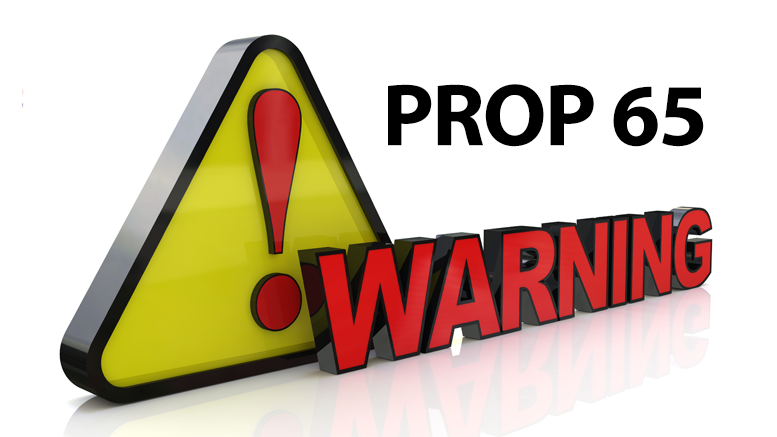
Proposition 65 requires businesses to provide warnings to Californians about significant exposures to chemicals that cause cancer, birth defects or other reproductive harm. These chemicals can be in the products that Californians purchase, in their homes or workplaces, or that are released into the environment. By requiring that this information be provided, Proposition 65 enables Californians to make informed decisions about their exposures to these chemicals. Proposition 65 also prohibits California businesses from knowingly discharging significant amounts of listed chemicals into sources of drinking water. Proposition 65 requires California to publish a list of chemicals known to cause cancer, birth defects or other reproductive harm. This list, which must be updated at least once a year, has grown to include approximately 900 chemicals since it was first published in 1987. Proposition 65 became law in November 1986, when California voters approved it by a 63-37 percent margin. The official name of Proposition 65 is the Safe Drinking Water and Toxic Enforcement Act of 1986.
The list of chemicals contains a wide range of naturally occurring and synthetic chemicals that include additives or ingredients in pesticides, common household products, food, drugs, dyes, or solvents. Listed chemicals may also be used in manufacturing and construction, or they may be byproducts of chemical processes, such as motor vehicle exhaust. For more information visit www.p65warnings.ca.gov/







